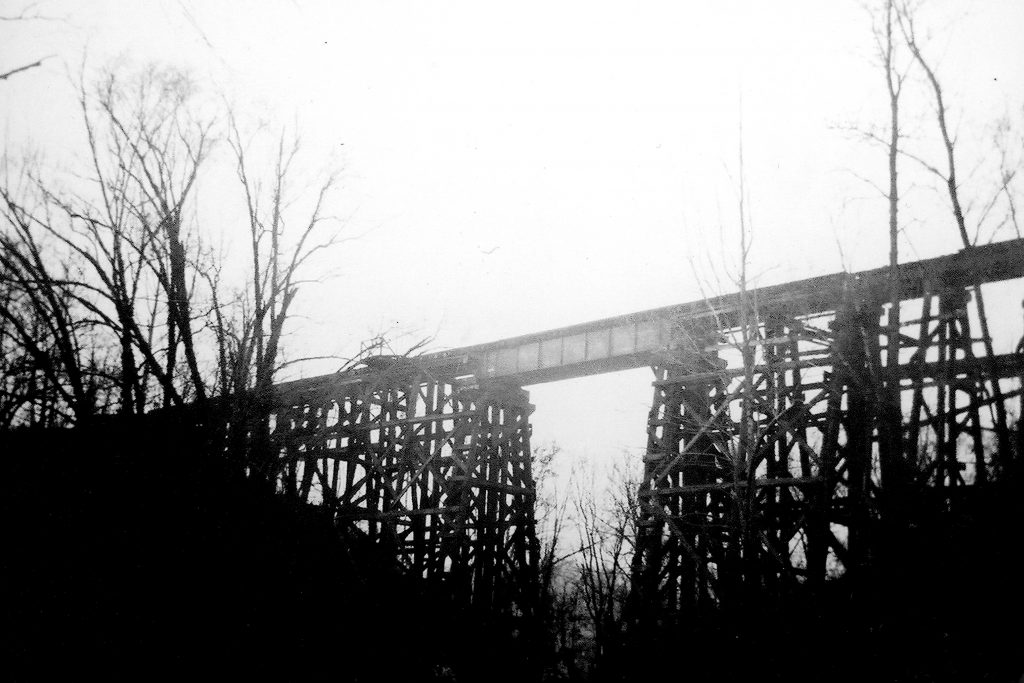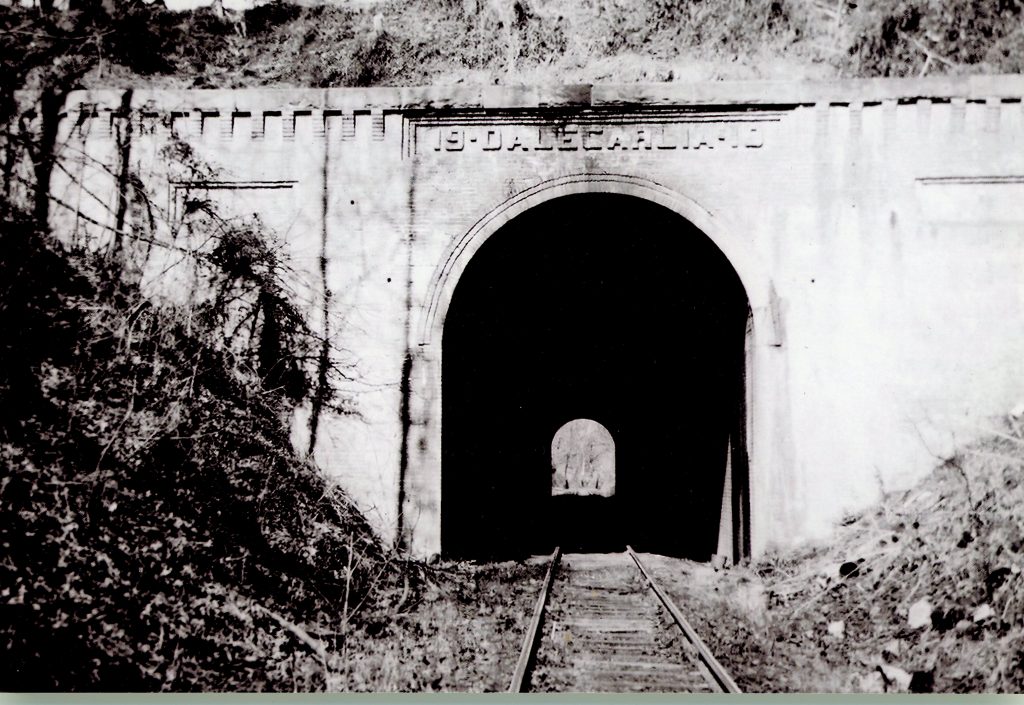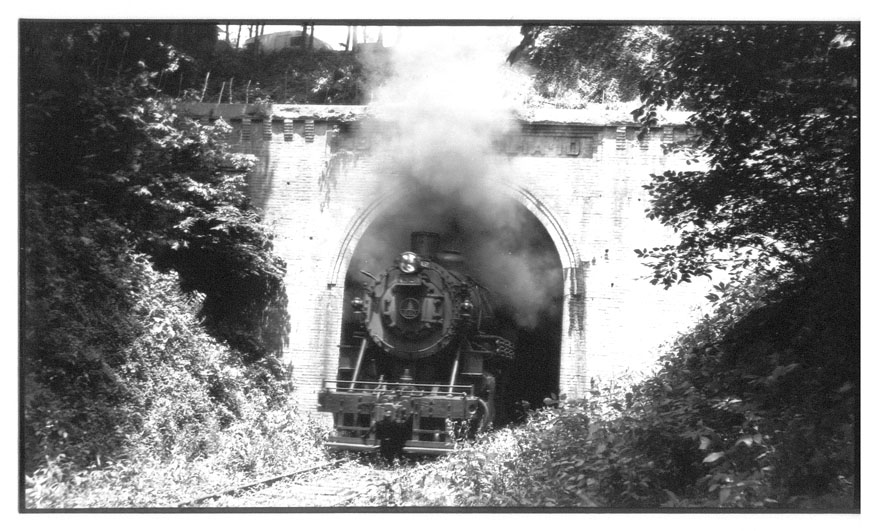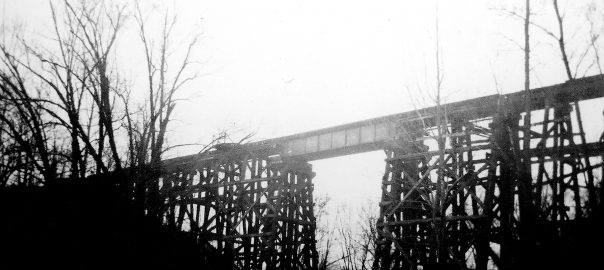Earlier this week my model railroad club visited the historic B&O station in downtown Silver Spring, MD to assist in reassembling the model railroad there in the baggage room. The layout had recently been moved due to some HVAC work above. While there, the host gave me a tour of the building. As I entered the station master’s office, and was glancing around, a poster board with photos caught my eye. On it were a collection of images from the long time Silver Spring station agent, Robert Davis, taken in the late 1940s mostly depicting the railroad in the area; wrecks, maintenance work, etc. But there were two photos that jumped off the poster for me. First is this image of the Rock Creek Trestle:

The reason this image is so special to me, is it is perhaps the best image I’ve seen that shows the trestle as it stood from the mid 1940’s until the Hurricane Agnes flood of 1972 when the west side of the trestle collapsed, forever changing the bridge. The trestle was demolished in 2019 to make way for the Purple Line. We are looking north in the photo, trains to Georgetown would be heading to the left.

This image shows the south portal of the Dalecarlia Tunnel. For context, just eight months earlier the B&O ran an excursion for the MSME, taking Q-1c 4320 out for a grand trip to Georgetown and back.

It was a delight to stumble upon these two photos. I am always looking for images to fill in the gaps of understanding and context as I do my research and these are two that I’d never before seen. I am hoping that there are more!

Love these photos and your research on the Georgetown Branch in general! I didn’t know there was a layout in the B&O station! Does your club ever hold open houses? Brad
Yowsa! More good stuff.
Brad – thanks for asking. Sorry for the delay. We are hoping to host some open houses at the station but not yet. The layout is still being brought back online after being under repair for some time. Please follow our socials for updates – you can find links on our website https://rmrrs.wordpress.com/ We may not post often, but we will post when we do have an activity such as an open house.
Sort of interesting that they used to refer to the branch as a “subdivision” back in the 40’s despite its secondary-line status for much of its life. I guess maybe that was a reflection of the larger amount of traffic the line saw at the time, or there was still some anticipation of it still eventually becoming a busier route? Or I guess “branch line” or “spur line” wasn’t a common term back then, lol. Either way cool finds!